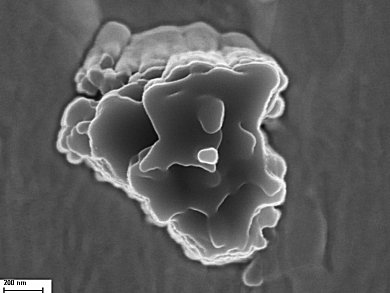Peter Hoppe, Max Planck Institute for Chemistry, Mainz, Germany, and colleagues have examined dust inclusions of the 4.6 billion years old Murchison meteorite. It had been already found in 1969. They isolated thousands of about 0.1 to 1 µm-sized silicon carbide stardust grains. The stardust grains originate from a supernova, and are older than our solar system. With a highly sensitive spectrometer, NanoSIMS, the isotopic distribution of the samples were determined and chemical isotopes were discovered, which indicate that sulfur compounds such as silicon sulfide originate from the ejecta of exploding stars. Sulfur molecules are central to many processes and important for the emergence of life.
In five silicon carbide samples the astrophysicists found an unusual isotopic distribution: They measured a high amount of heavy silicon and a low amount of heavy sulfur isotopes, a result that does not fit with current models of isotope abundances in stars. At the same time they were able to detect the decay products of radioactive titanium which can be produced only in the innermost zones of a supernova. This proves that the stardust grains indeed derive from a supernova.
Image: © Peter Hoppe, MPI for Chemistry
- Max-Planck-Gesellschaft, Munich, Germany



